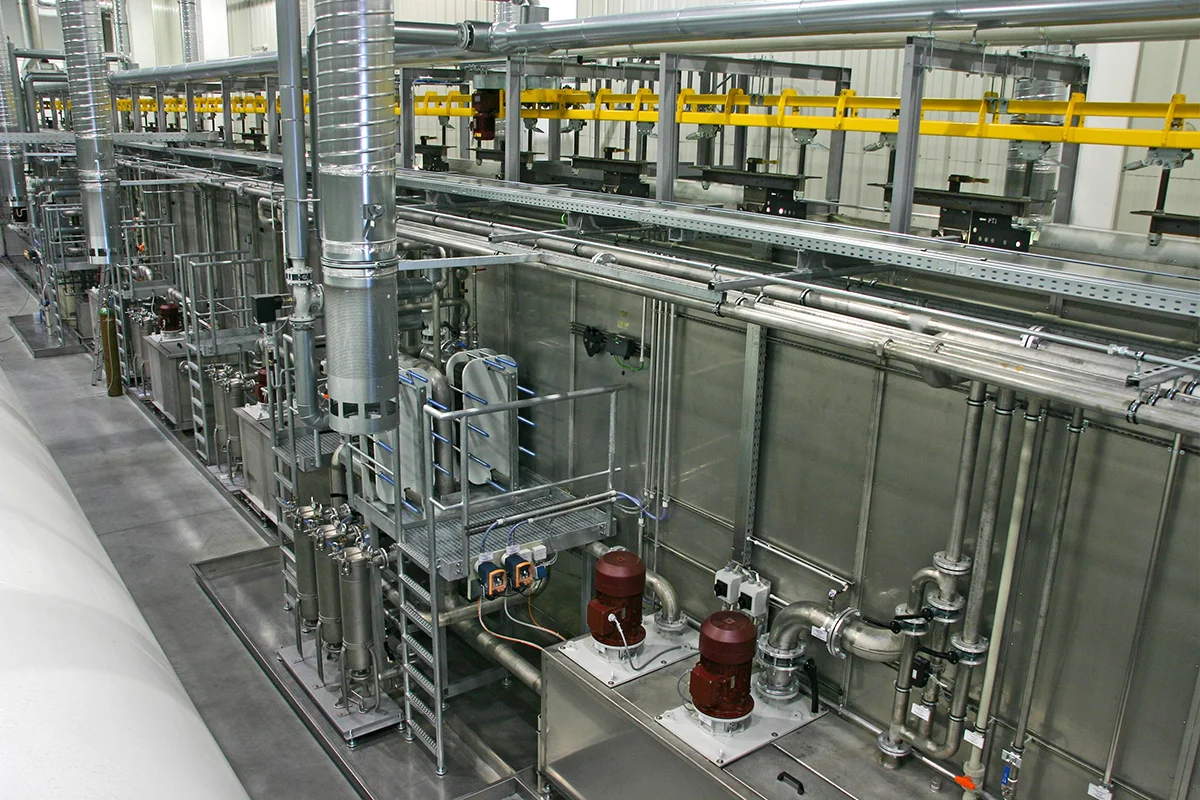Electrophoretic coating, commonly known as e-coating, has become an indispensable process in the automotive industry due to its superior corrosion resistance, uniform coverage, and cost-effectiveness. In this blog post, as high quality coating solution provider, Lexuan will share the application of electrophoretic coating line in automotive industry to effectively improve durability, environmental sustainability and production efficiency.
1. Overview of Electrophoretic Coating Technology
Electrophoretic coating is an advanced surface treatment process that involves the deposition of a coating material (usually epoxy or acrylic resin) onto a conductive metal surface using an electrical field. The part to be coated acts as an electrode, and the coating particles are dispersed in a water-based bath. When an electric voltage is applied, the charged particles migrate and form a uniform, adherent film on the component's surface.
There are two types of e-coating processes: anodic and cathodic. In the automotive sector, cathodic electrophoretic deposition (CED) is predominantly used due to its excellent corrosion resistance and ability to provide a robust base layer for topcoats.
2. Core Applications in Automotive Manufacturing
2.1 Body-in-White (BIW) Corrosion Protection
One of the most critical applications of electrophoretic coating in the automotive industry is the protection of the Body-in-White (BIW) structure. The BIW is the primary skeleton of a vehicle and includes the frame, doors, roof, and other structural components made from steel or aluminum. After welding and assembly, the BIW undergoes e-coating to ensure:
* Complete and even coating coverage, even in recesses and weld seams.
* Long-lasting corrosion resistance that meets stringent OEM standards.
* Excellent adhesion for subsequent primer and paint layers.
2.2 Coating of Automotive Parts and Accessories
Beyond the vehicle body, numerous automotive components benefit from e-coating:
* Chassis components such as suspension arms, axles, and control arms.
* Engine parts including brackets and mounting hardware.
* Interior and exterior accessories like seat frames, hinges, and handles.
These parts are often exposed to moisture, road salts, and varying temperatures. E-coating ensures that they are protected from corrosion, wear, and environmental damage.

3. Advantages of Electrophoretic Coating Line Integration
3.1 Superior Coverage and Uniform Film Thickness
Unlike conventional spray or dip coatings, electrophoretic coating lines provide complete and consistent coverage across complex geometries, sharp corners, and hidden cavities. The self-limiting nature of the process ensures a uniform film thickness, typically between 15–35 microns, which is critical for tight-tolerance automotive parts.
3.2 Enhanced Corrosion and Chemical Resistance
The cured e-coat forms a highly durable protective barrier that resists rust, solvents, and mechanical abrasion. This is especially important for vehicles operating in harsh climates or coastal regions.
3.3 High Production Efficiency
Modern e-coating lines are automated and continuous, allowing high-throughput coating of thousands of parts per day. This enhances production speed and consistency, reducing manual labor and minimizing errors.
3.4 Eco-Friendly Process
Electrophoretic coating is a low-VOC (volatile organic compound) and water-based process, aligning with global environmental regulations. The use of closed-loop systems for paint and water recycling also reduces waste and operational costs.
4. Process Flow of an Automotive E-Coating Line
A typical electrophoretic coating line in the automotive industry includes the following stages:
4.1. Pre-treatment: Removal of dirt, grease, and oxides through cleaning and phosphating to ensure surface readiness.
4.2. Electro-deposition: Immersion of parts into the coating tank, where electrical current facilitates resin deposition.
4.3. Rinse Zones: Multi-stage rinsing removes excess paint and maintains film uniformity.
4.4. Curing Oven: The coated parts are baked at \~170–200°C to cure and crosslink the film.
4.5. Inspection and Quality Control: Final checks ensure coating thickness, adhesion, and defect-free surfaces.
This streamlined process enhances quality control and ensures reproducibility across production batches.
5. Integration with Downstream Processes
Electrophoretic coating serves as the foundation layer for subsequent painting steps in vehicle production. Its excellent adhesion properties make it compatible with a variety of topcoat systems, including powder coatings and wet paints. Additionally, parts processed through e-coating lines can seamlessly move to assembly, welding, or further machining without compromising coating integrity.
6. Key Considerations for E-Coating Line Implementation
When designing or upgrading an e-coating line for automotive use, manufacturers must consider:
* Bath chemistry stability to ensure consistent coating quality.
* Automation and conveyor integration to meet production scale.
* Tank and oven dimensions suitable for part geometry and batch size.
* Environmental and safety compliance, including filtration, ventilation, and effluent management.
Proper maintenance, regular line calibration, and bath monitoring are essential for sustaining long-term process efficiency.
Conclusion
The electrophoretic coating line has become a cornerstone of modern automotive manufacturing, delivering unparalleled protection, uniformity, and cost efficiency. Its versatility extends from large body structures to small components, helping automakers meet performance, aesthetic, and environmental goals. As the industry evolves, continuous innovation in e-coating technologies will further enhance product quality and sustainable production.
www.lexuaneqpt.com
Lexuan